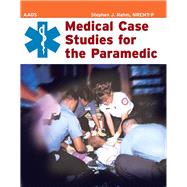Medical Case Studies for the Paramedic
, by American Academy of Orthopaedic Surgeons (AAOS),; Rahm, Stephen J.- ISBN: 9780763777722 | 0763777722
- Cover: Paperback
- Copyright: 4/20/2009
Paramedics must perform a systematic assessment of the patient, determine appropriate treatment, and give it. While assessment and management principles are learned in initial training, they are not practiced until training is completed. Now, paramedic students can apply these principles with Medical Case Studies for the Paramedic. Medical Case Studies for the Paramedic presents 20 case studies on the most important medical emergencies for the ALS-level reader. A superb supplement to classroom and textbook learning, this book allows the reader to practice applying knowledge to cases before actually going on an emergency call. The types of emergencies include a range of presentations such as semiconsciousness, unconsciousness, difficulty breathing, weakness, nausea, headache, slurred speech, chest pain, allergic reaction, seizure, and anxiety. Each case study is presented in full, poses questions to the reader, and is followed by a summary of the case, including answers to the questions posed. The objectives for each of the case studies in this book are as follows: Describe the appropriate initial management based on initial assessment findings. Interpret the patientrs"s cardiac rhythm, and determine if a correlation exists between the patientrs"s condition and their cardiac rhythm. Formulate a field impression based on the patientrs"s signs and symptoms, and findings of the focused history and physical examination. Determine if the patientrs"s vital sign values and SAMPLE history findings are consistent with your field impression. Identify specific treatment that is required for the patientrs"s condition. Determine if further treatment is required following a post-treatment reassessment of the patient. Based on the patientrs"s condition, identify any special considerations for care.






